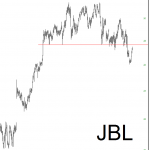
The Canadian dollar strengthened for a fourth consecutive week against the US dollar, rising over 2% by Friday’s close. USD/CAD fell to a two-year low on Friday as price tested lows of 1.2061. Further gains can be expected from the USD/CAD as the economy continues to push ahead at full steam.
BoC hikes interest rates in September
The Loonie gained sharply last week as a result of a rate hike from the Bank of Canada. The BoC surprised the markets by hiking interest rates by 25 basis points, bringing the overnight lending rate to 1.0%. This was the second rate hike from the BoC this year. The BoC had initially hiked interest rates in July this year.
The rate hike came after BoC’s Poloz gave hawkish commentary at a banking conference in Portugal. The BoC also became the second G7 central banks to hike interest rates after the Federal Reserve in the US.
In its statement, the BoC said that the strong GDP numbers helped to make the decision to hike rates. This comes despite Canada’s inflation still lingering below the BoC’s 2% target rate. The overnight index swaps markets were pricing in a rate hike from the BoC but expected this to happen only later in the fourth quarter.
Despite the surprise interest rate hike, the markets are now expecting the BoC to push through with another rate hike by December this year.
Canada’s GDP was seen rising sharply as the second quarter annualized GDP growth rate hit 4.5%, beating expectations of a 3.3% increase. The data underscored the supportive economic which is also being fueled by a booming housing market. Regional indicators suggested rising prices in cities such as Vancouver and Toronto.
Canada’s unemployment rate falls to 6.2%
Following the BoC’s decision, later in the week Statistics Canada released the monthly employment numbers. Data showed that the Canadian economy added 22,200 net jobs in the month of August. This was above the median forecasts which suggested that the economy might have added 15,000 jobs during the period.














Leave A Comment